Somewhere along the line, it sticks in my mind that the rate of twist was different for slug barrels vs spreader barrels. There's also the fact that shotguns with one spreader barrel (often both barrels are short as well) are referred to as a "becassier" model. A woodcock special. ....
Hello L. Brown,
Thanks for the reply.
I did my first testing today, and I think this paragraph from Argo44 earlier post pretty much describes the gun I have.....
" ... There is another particularity which we are going to find on the barrels ..... The (shallow) rifling. For the dispersion of shot when firing at a short distance and for the shooting of ball...."The targets below show the results of today's testing. I started very conservative, and will increase velocities carefully in my next load testing. I anticipate with the correct load the gun will shoot more to point of aim. I will be adjusting both velocity and bullet weight to try to achieve this. Its a little hard getting used to a swap rib and a single bead for aiming the rifled barrel. I think a lot of the dispersion was due to that. I'm sure I'll get better as I become more familiar with this sighting system. I'm guessing the option of shooting a ball, was intended as a way to take advantage of as unexpected opportunity for a deer, or boar, at reasonably close distance.
Of particular note is that both the light weight 1oz hollow base bullets, and the heavy 1-1/2oz bullets stabilized in the slow twist of the rifled barrel, as evidenced by round holes, in close groups. I did not shoot either bullet in the smooth bore barrel.
I tested first with shotshell on the 17" square target. A mild target load of 7-1/2s. The shotshell fired from the left smooth bore barrel patterned a bit high, but shows a good pattern from its modified choke. However, the shotshell fired at 25 yards from the rifled barrel shows only 23 pellets of the 338 pellets in the cartridge. (black circles) I fired a second shell in the rifled barrel from 12 yards and that shows a very uniform pattern. (red circles) This barrel would be excellent for close shooting of flushed game, or driven game, with the ability for a follow-up shot from the left barrel if the range increased.
Next I tested the rifled barrel. Some years ago I had a custom bullet mold made for the 1-1/2oz (655g) .676 dia. 16 gauge bullet, as per the German bullets for Vogel Schiessen rifles, of which I have two. One in 18 gauge and one in 16 gauge. The bullet casts .676 and was sized to .660 dia for this gun's bore. The hollow base 1oz bullet is from a Lyman mold and casts a .695 dia. slug. Although the groove dia of this gun is .660, the soft hollow bullet swages down through the forcing cone with no effect on pressure. I did not lube either bullet. I drip 6 drops of oil in each for the fold openings of the crimp, and store bullet-up. The oil coats the bulllets and is absorbed into the fiber wad below it. This method has worked well in my Paradox gun with no leading. I used the paradox crimping tool I designed (and sell) to hold the bullets in place.
.
.
.
.
.
GERMAN VOGEL SCHIESSEN BULLETS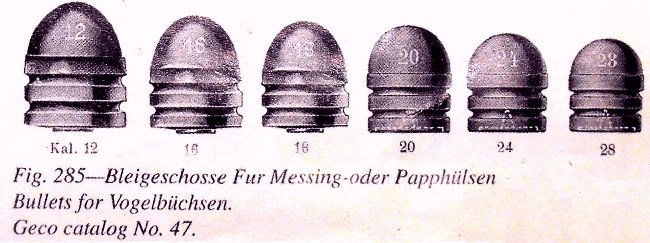
.
.
.
.
.
MY 16 BORE BULLET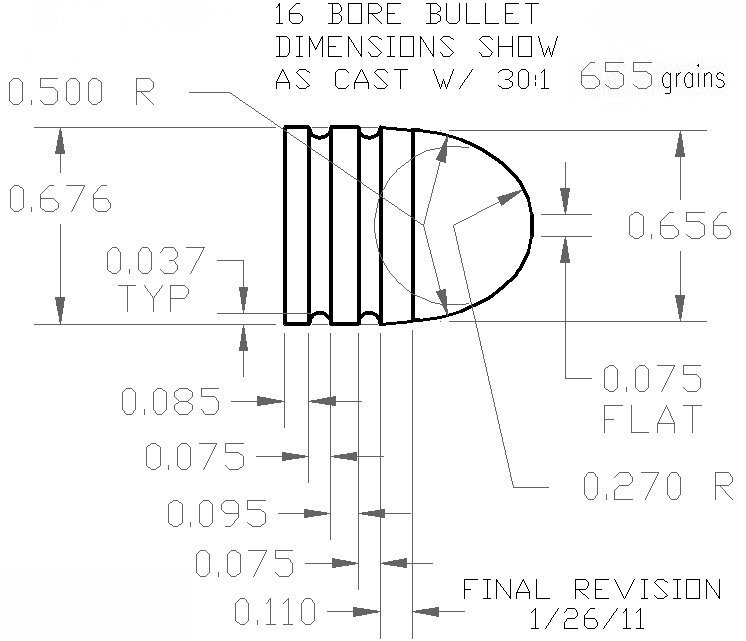
.
.
.
.
.
1-1/2oz 655g BULLET - .676 dia sized down to .660 dia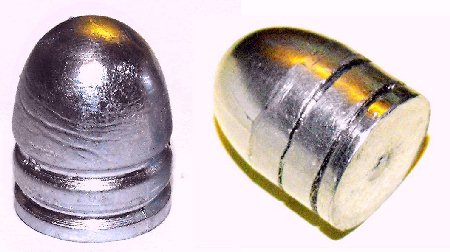
.
.
.
.
.
1oz 438g HOLLOW BASE 16ga SLUG - .695 dia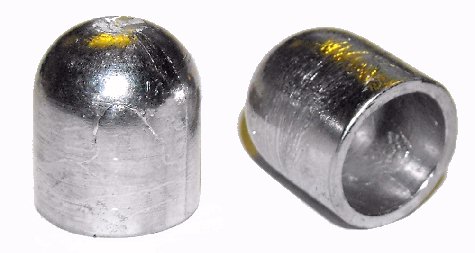
.
.
.
.
.
BULLETS CRIMPED WITH THE CUSTOM PARADOX CRIMPING TOOL - THAT I MAKE & SELL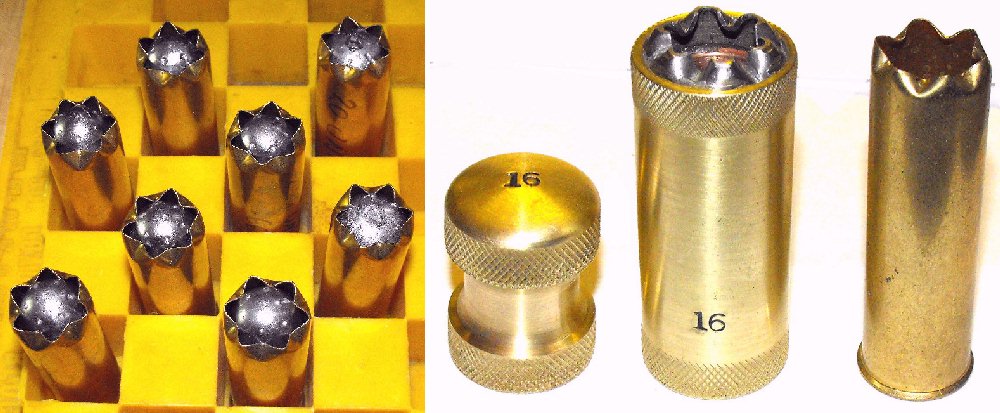
.
.
.
.
.
TARGET SHOWING BULLETS FIRED IN RIFLED BARREL @ 25yds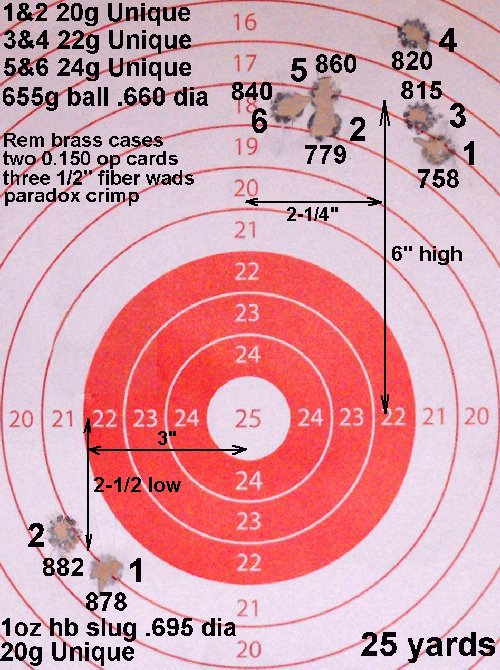
.
.
.
.
.
TARGET SHOWING 1oz #7-1/2 SHOT FIRED IN RIFLED BARREL @ 25yds (BLACK) and @ 12yds (RED) 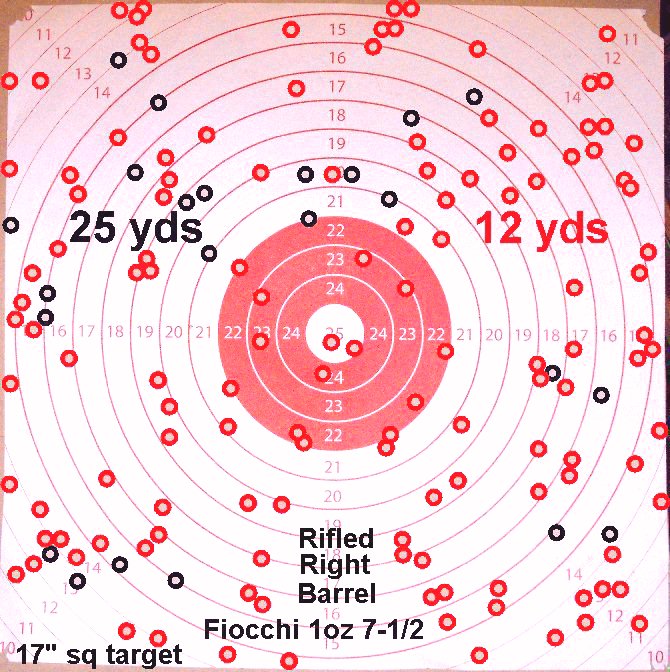
.
.
.
.
.
TARGET SHOWING 1oz #7-1/2 SHOT FIRED IN SMOOTH BORE MOD CHOKE BARREL @ 25yds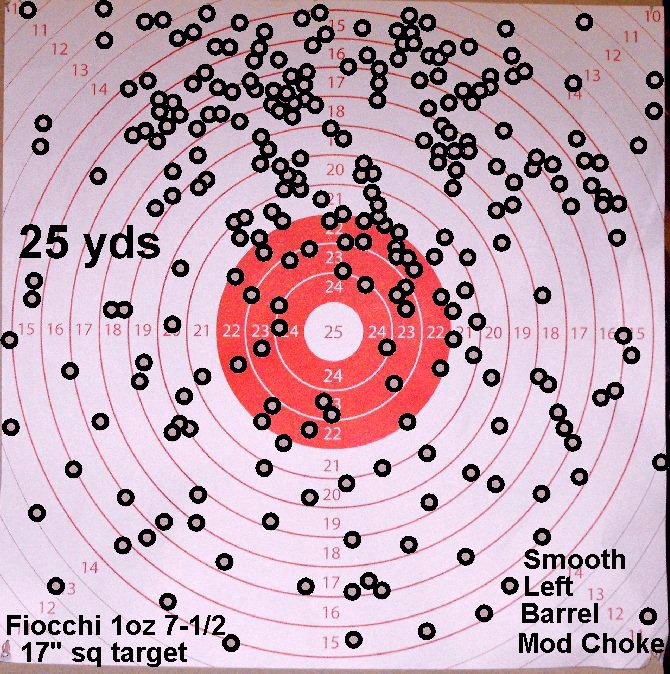
.
.
.
.
.